Greenwich is a charming and historic area of London that is best known for lending its name to the time by which the British set their clocks – Greenwich Mean Time. It is also home to a number of touristic attractions such as the Cutty Sark and the Maritime Museum.


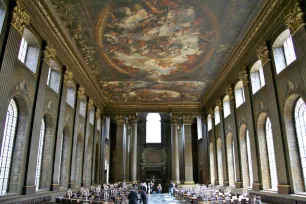
Located in the southeast portion of London on the south bank of the River Thames, Greenwich is named for a Saxon word meaning “green village”. The birthplace of many royal members of the House of Tudor, the district was a popular resort area in the seventeenth century, particularly known for its grand houses.
A Royal History
A royal palace, originally known as Bella Court, had been located in Greenwich since around 1427. The palace, rebuilt by King Henry VII as the Palace of Palentia became a popular royal residence. King Henry VIII spent much of his time here, and his three legitimate children were born at the palace. Unfortunately, the Tudor style building was later razed.
In 1616, King James I commissioned Inigo Jones with the construction of the Queen’s House, which is considered the oldest Renaissance building in England. Charles II wanted to turn the estate into an English version of Versailles and even employed André le Nôtre, the landscape architect of Versailles. He also started with the construction of a new wing along the River Thames.
His successor William III preferred Hampton Court as their residence and decided to convert the wing into a Royal Naval Hospital. The hospital closed in 1869, but the building still stands as part of the Old Royal Naval College historic site.

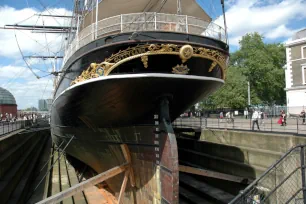
National Maritime Museum
Greenwich is also renowned for its rich maritime history, a history that is celebrated today in the attractions that are found throughout the area. Greenwich’s maritime area was awarded World Heritage Site status in 1997.
The National Maritime Museum is dedicated to the illustrious maritime history of this sea-faring nation. The magnificent museum covers the era from the sixteenth to the nineteenth centuries and displays hundreds of ship models, paintings, uniforms, navigation instruments and other maritime related artifacts. Museum highlights include the uniform Nelson was wearing when he was fatally shot at the Battle of Trafalgar and Prince Frederick’s gilded barge.
Cutty Sark
The Riverfront area of Greenwich is one of the most interesting areas to explore. Here you can find the Cutty Sark, a historic clipper ship built in 1869, now the only remaining nineteenth-century tea clipper. In 1871 the clipper broke the world sailing record by traveling from China to London in just 107 days.
Queen’s House

King James I commissioned architect Inigo Jones with the construction of the Queen’s House, which was built as the summer residence for his wife, Anne of Denmark.
Inigo Jones had just completed a year-long trip through Italy to study Roman and Renaissance architecture. He used this knowledge to design Queen’s House in an elegant Italian Renaissance style. It is considered the first English Palladian house.
Construction of the house started in 1616, and it was completed in 1638 by Inigo Jones’s student John Webb. The house was used as a royal residence by King Charles I and King Charles II. Its royal history ended in 1806 when George III donated the house to the Royal Naval Asylum.
Old Royal Navy College
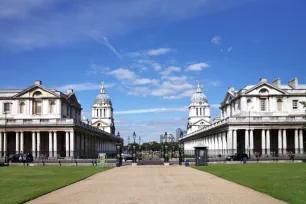
The oldest building of the Old Royal Navy College dates back to the reign of Charles II, who wanted to build a palace by the Thames river.
Charles II’s successors however decided to move to Hampton Court. They commissioned renowned architect Christopher Wren with the conversion of the existing building into a residence for wounded and retired seamen, the Royal Naval Hospital. The result was a complex of four separate, majestic buildings. They were positioned in such a way that the Queen’s House would have an uninterrupted view of the Thames.
The buildings would keep their original function until 1869 when they were used as a training center for naval officers, the Royal Naval College. In 1998 the training center moved to Dartmouth and the complex is currently used by the University of Greenwich.
Greenwich Park
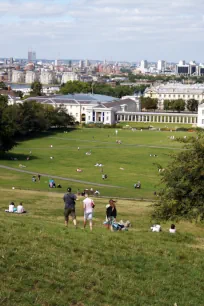
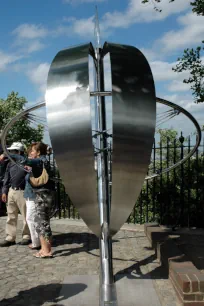
The history of Greenwich Park goes back to 1733, when King Henry V fenced off an area of eighty hectares near Bella Court. The seventeenth-century design of the French landscape gardener André le Nôtre is still visible. From the top of the sloping terrain, near the Royal Observatory, you have a magnificent view over East End and the Docklands.
The Ranger’s House, situated at the southeast corner of the park, was built at the end of the seventeenth century. It currently houses a museum.
Royal Observatory
In the park is the former Royal Observatory, through which the Prime Meridian passes. Charles II commissioned Christopher Wren with the construction of the observatory. The goal of the observatory was to help navigation of the ships by studying the stars, creating maps, and determine the longitude when at sea. The first astronomer hired by the King was John Flamsteeds, after whom the main building is now named.
Greenwich Mean Time, the timezone used in the United Kingdom, was at one time based on the time observations made at this observatory, which is no longer in operation. However, each day a ball drops at precisely 13:00 to mark the exact time. Also, astronomical and navigational tools are still on display here for guests to view.
Greenwich Town Center
In the center of Greenwich amidst an abundance of Georgian and Victorian architecture, guests can also visit the Greenwich Market, specializing in antiques, artwork, and crafts. Also in the town center is the quirky Fan Museum, as well as two theaters, the Greenwich Theatre and the Greenwich Playhouse.
- Next: The Monument
- More Sights & Attractions in London

